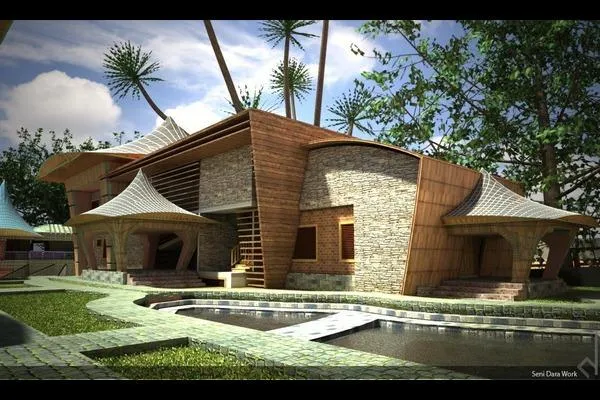
Exploring African Architectural Heritage in Modern Designs

Exploring African Architectural Heritage in Modern Designs
Introduction
African architecture has deep historical roots that showcase tradition, sustainability, and cultural identity. Today, architects are merging these age-old techniques with modern innovations to create culturally rich, energy-efficient structures. Whether in urban cityscapes or rural developments, the fusion of African architectural heritage with contemporary design is shaping the future of sustainable construction.
1. The Foundations of African Architecture
Before the influence of Western styles, indigenous African architecture thrived on functionality, climate adaptation, and locally sourced materials. Some notable traditional structures include:
- Mud and Adobe Homes – Common in Nigeria’s northern regions, providing natural insulation against extreme temperatures.
- Thatched Roofs & Courtyards – Designed for ventilation, widely seen in Yoruba architecture.
- Stone & Timber Houses – Inspired by indigenous materials found in forested areas.
2. Fusion of Tradition with Modern Trends
Architects today are integrating African elements into contemporary sustainable designs, creating stunning results. Some popular methods include:
- Locally Sourced Materials – Bamboo, reclaimed wood, and clay bricks preserve authenticity while maintaining durability.
- Eco-Friendly Structures – Passive cooling systems, open courtyards, and solar panels reduce energy dependence.
- Artisanal Craftsmanship – Hand-carved doors, intricate ceilings, and geometric patterns honor cultural heritage.
3. Technology’s Role in Preserving African Architecture
Advancements in construction technology are making it easier to blend tradition with modernity:
- 3D Printing for Low-Cost Housing – Affordable and efficient solutions for rural and urban settlements.
- Smart Homes with Traditional Influences – AI-driven security and energy-efficient lighting within heritage-inspired layouts.
- Urban Green Spaces – Combining ancient agricultural methods with modern sustainability practices.
4. Challenges & Future Prospects
Although African architectural heritage is gaining global recognition, certain challenges remain:
- Material Costs – Traditional materials may be pricier than mass-produced alternatives.
- Balancing Modern Regulations with Cultural Designs – Architects must ensure heritage compliance while meeting urban standards.
- Increasing Awareness – Educating new generations on preserving indigenous architecture is key to sustained appreciation.
some successful case studies showcasing modern African architectural designs that blend tradition with innovation:

1. Makoko Floating School (Nigeria)
- Designed to address flooding challenges in Lagos, this floating structure provides sustainable education spaces.
- Built using locally sourced wood and recycled materials it showcases eco-friendly construction.
- The school is an example of adaptive architecture, proving that modern designs can work within traditional communities.

2. Grand Egyptian Museum (Egypt)
- A fusion of ancient Egyptian aesthetics with contemporary architecture.
- The museum integrates sustainable building techniques while preserving historical artifacts.
- It stands as a symbol of cultural heritage, blending modernity with tradition.

3. Mapungubwe Interpretation Centre (South Africa)
- A UNESCO- recognized project that highlights vernacular African architecture.
- Built using compressed earth blocks, it reflects sustainability and climate adaptation.
- The design embraces natural ventilation and passive cooling techniques.

4. Kigali Convention Centre (Rwanda)
- Inspired by traditional Rwandan hut design, this modern structure serves as a business and cultural hub.
- The dome-shaped architecture integrates energy-efficient materials and solar technology
- It represents Africa’s growing urban development while maintaining cultural identity.
5. Lideta Mercato (Ethiopia)
- A commercial building designed with perforated facades to enhance natural cooling.
- The structure incorporates local Ethiopian patterns, blending tradition with modern retail spaces.
- It is a prime example of sustainable urban architecture.
Conclusion
African architecture is far more than design—it represents resilience, sustainability, and identity. The integration of traditional techniques and modern innovations continues to shape housing, commercial spaces, and urban landscapes. As construction evolves, embracing African architectural heritage ensures that buildings remain functional, culturally significant, and environmentally responsible.